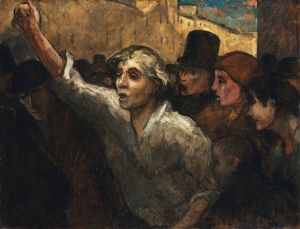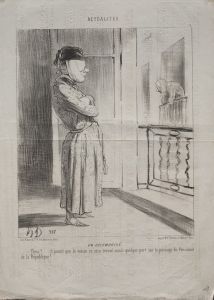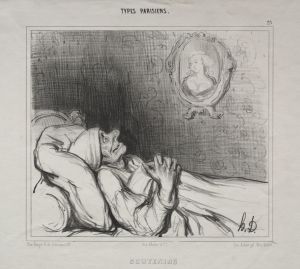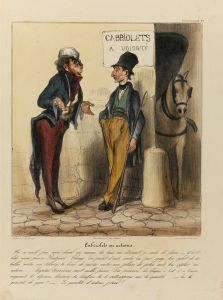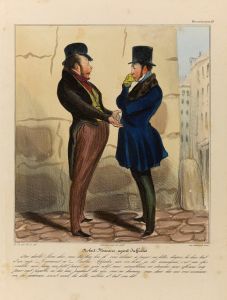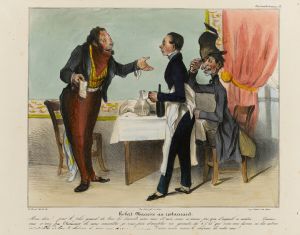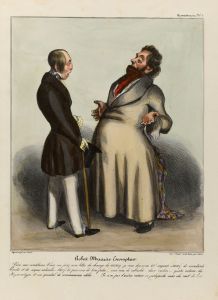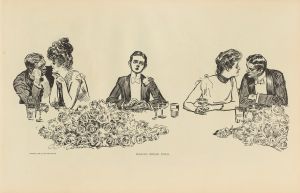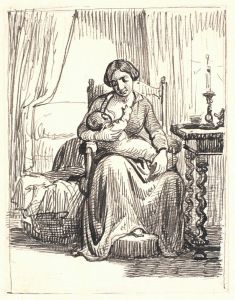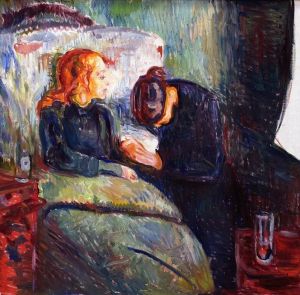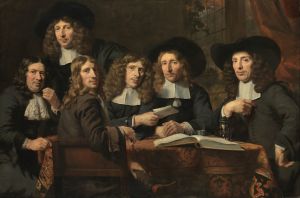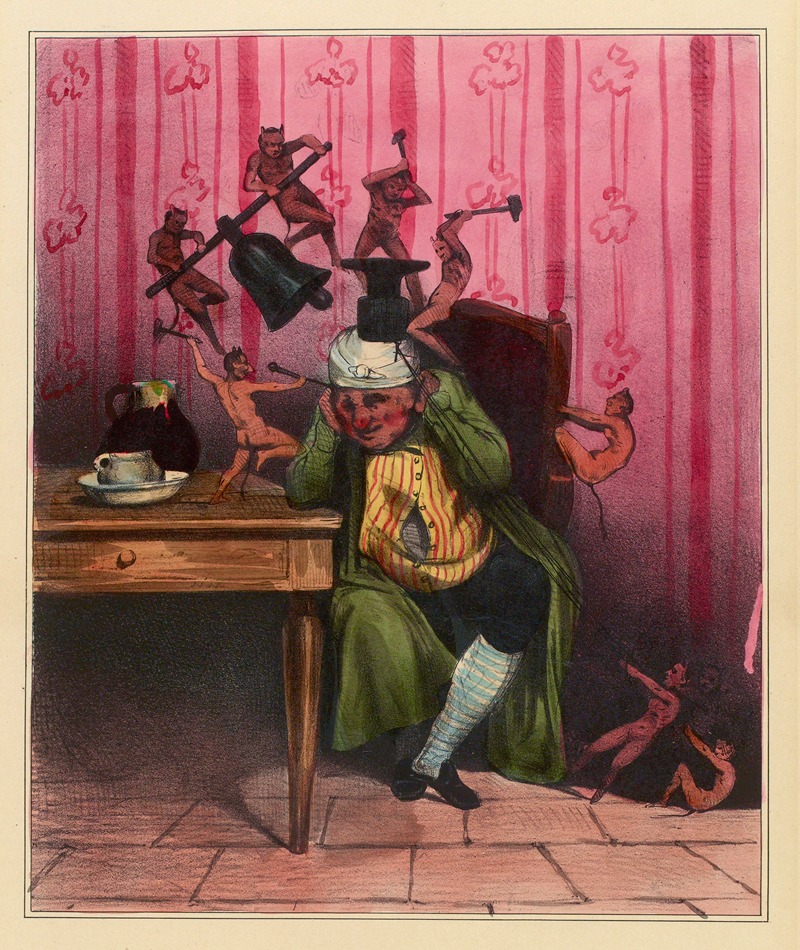
Le mal de tête.
A hand-painted replica of Honoré Daumier’s masterpiece Le mal de tête., meticulously crafted by professional artists to capture the true essence of the original. Each piece is created with museum-quality canvas and rare mineral pigments, carefully painted by experienced artists with delicate brushstrokes and rich, layered colors to perfectly recreate the texture of the original artwork. Unlike machine-printed reproductions, this hand-painted version brings the painting to life, infused with the artist’s emotions and skill in every stroke. Whether for personal collection or home decoration, it instantly elevates the artistic atmosphere of any space.
Honoré Daumier was a prominent French artist known for his caricatures, paintings, and sculptures. He lived during the 19th century, a period marked by significant political and social changes in France. Daumier's work often reflected his keen observations of society and his interest in the human condition. Among his diverse body of work is the painting "Le mal de tête" (translated as "The Headache").
"Le mal de tête" is a lesser-known piece by Daumier, and like many of his works, it captures a moment of everyday life with a focus on human emotion and expression. Daumier was renowned for his ability to convey complex emotions through simple compositions, and this painting is no exception. The subject of the painting is an individual experiencing a headache, a universal human experience that Daumier chose to depict with empathy and realism.
Daumier's style is characterized by his use of bold lines and a somewhat muted color palette, which can be seen in "Le mal de tête." His background as a caricaturist is evident in the exaggerated features of the subject, which serve to emphasize the discomfort and distress associated with a headache. This approach allows viewers to immediately grasp the emotional state of the subject, showcasing Daumier's skill in visual storytelling.
The painting reflects Daumier's interest in the everyday struggles of ordinary people, a theme that runs throughout much of his work. He often focused on the lives of the working class and the bourgeoisie, highlighting their challenges and the societal pressures they faced. In "Le mal de tête," the subject's expression and posture convey a sense of fatigue and frustration, emotions that are relatable to a wide audience.
Daumier's work was heavily influenced by the political and social climate of his time. He lived through periods of great upheaval in France, including the July Revolution of 1830 and the Revolution of 1848. These events shaped his worldview and often found expression in his art, which frequently contained elements of social commentary and critique. While "Le mal de tête" is not overtly political, it still reflects Daumier's interest in the human condition and his ability to capture the essence of personal experience.
Despite his significant contributions to art, Daumier did not achieve widespread recognition during his lifetime. It was only after his death that his work gained the appreciation it deserved. Today, he is celebrated as a master of both caricature and fine art, with "Le mal de tête" standing as a testament to his ability to blend humor, empathy, and keen observation in his portrayal of human experiences.
In summary, "Le mal de tête" by Honoré Daumier is a poignant depiction of a common human ailment, rendered with the artist's characteristic attention to emotion and detail. Through this painting, Daumier continues to resonate with audiences, offering a glimpse into the everyday lives and struggles of people in 19th-century France.





